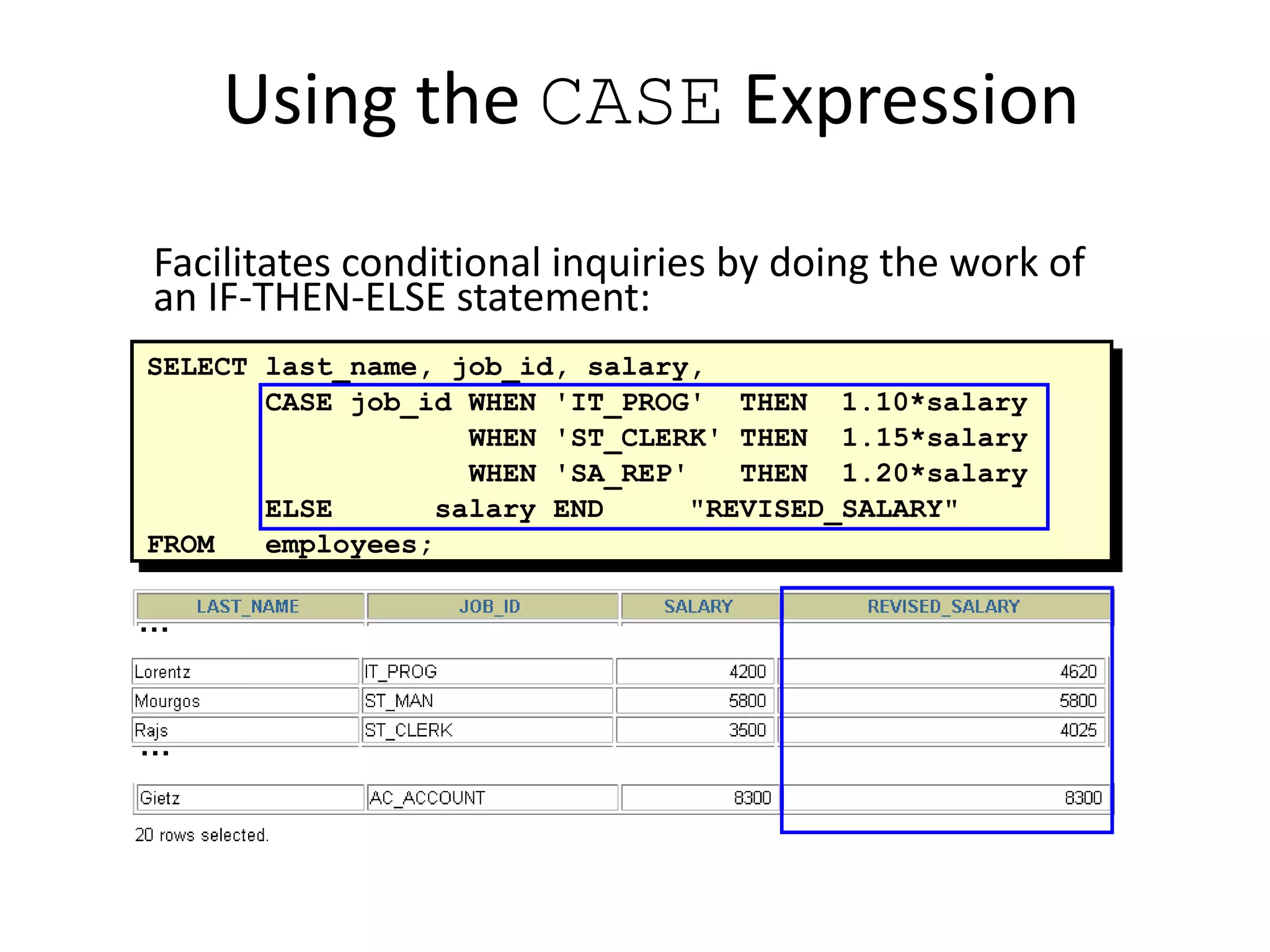This document provides an overview of SQL data definition and manipulation commands including INSERT, UPDATE, DELETE, SELECT and the CASE expression. It describes how to add, modify and remove rows from tables. It also covers selecting columns, arithmetic expressions, column aliases, concatenation, literals, DISTINCT, and conditional logic using the CASE expression. Care is advised when using DELETE and UPDATE to avoid removing unintended data.
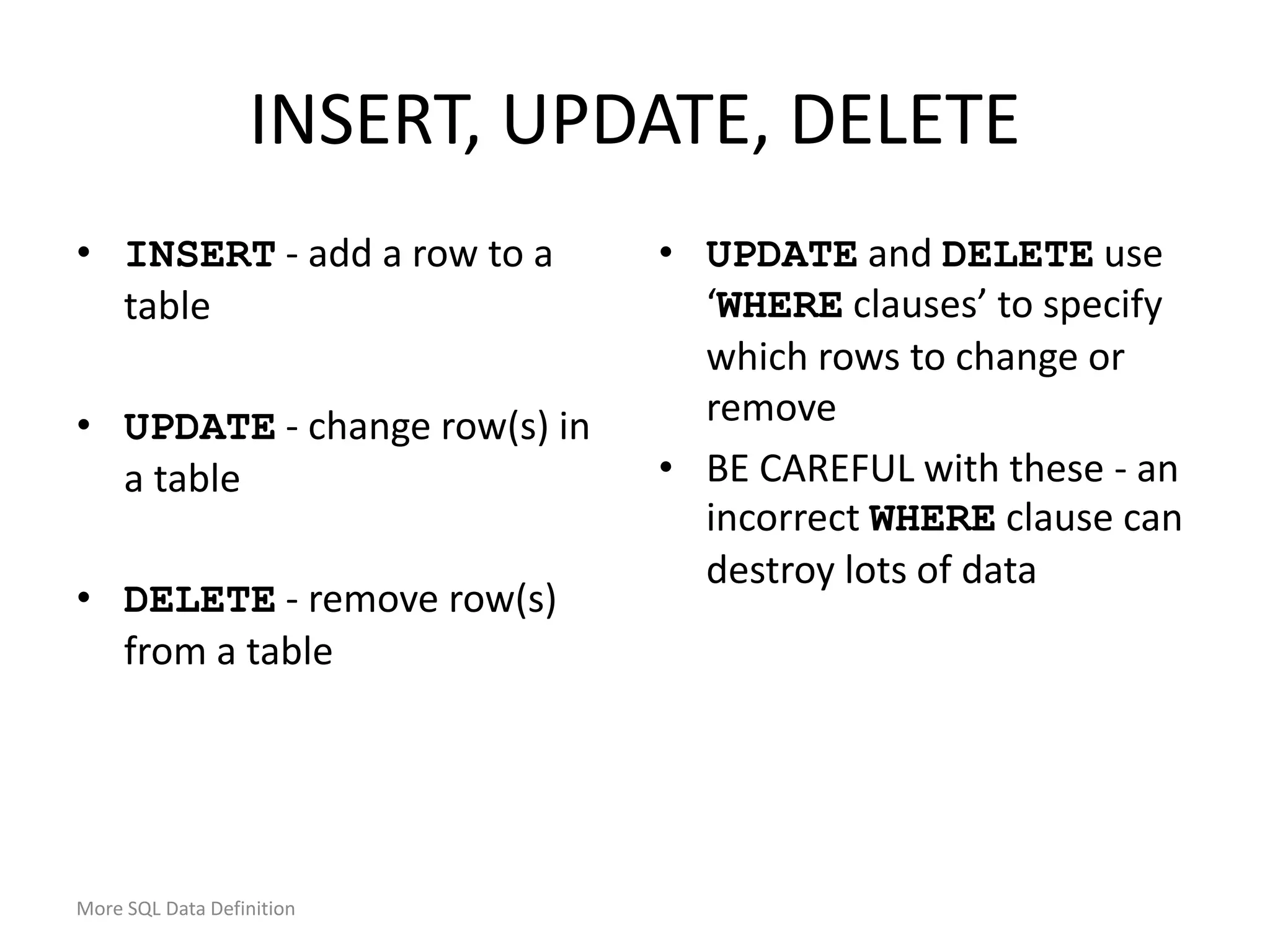
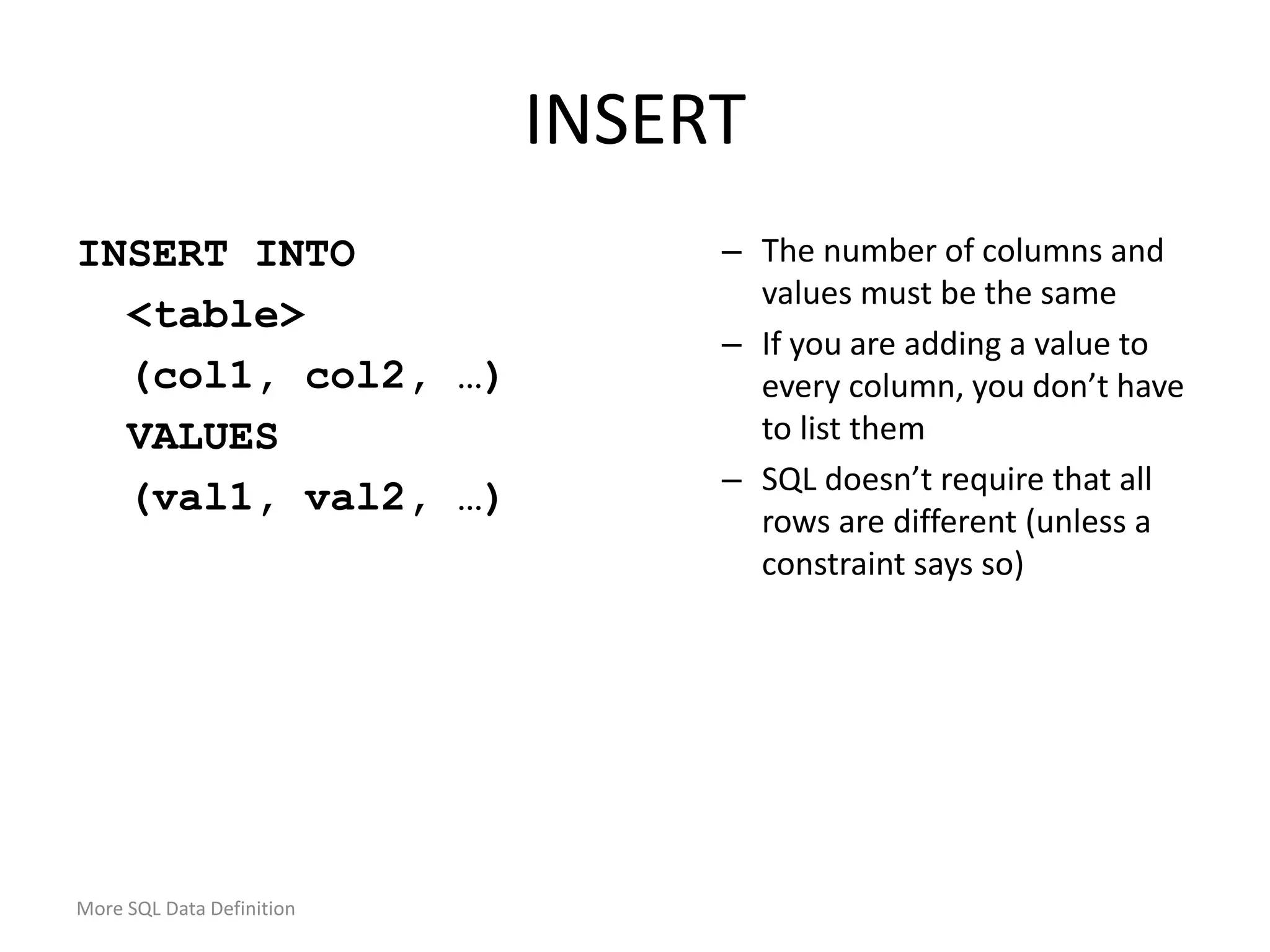
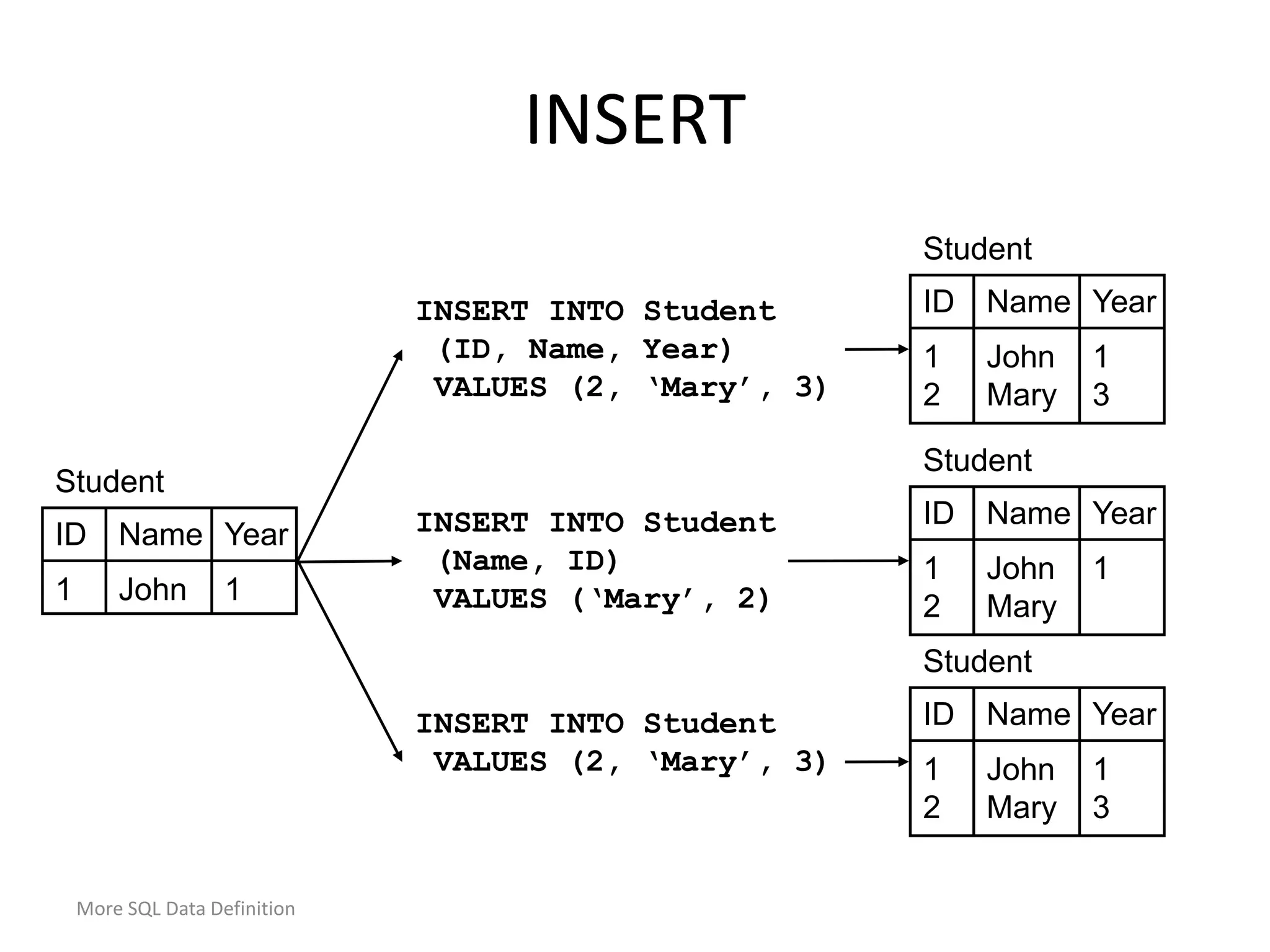
![More SQL Data Definition UPDATE UPDATE <table> SET col1 = val1 [,col2 = val2…] [WHERE <condition>] – All rows where the condition is true have the columns set to the given values – If no condition is given all rows are changed so BE CAREFUL – Values are constants or can be computed from columns](https://image.slidesharecdn.com/lecture4-dml-170401064241/75/DML-using-oracle-4-2048.jpg)
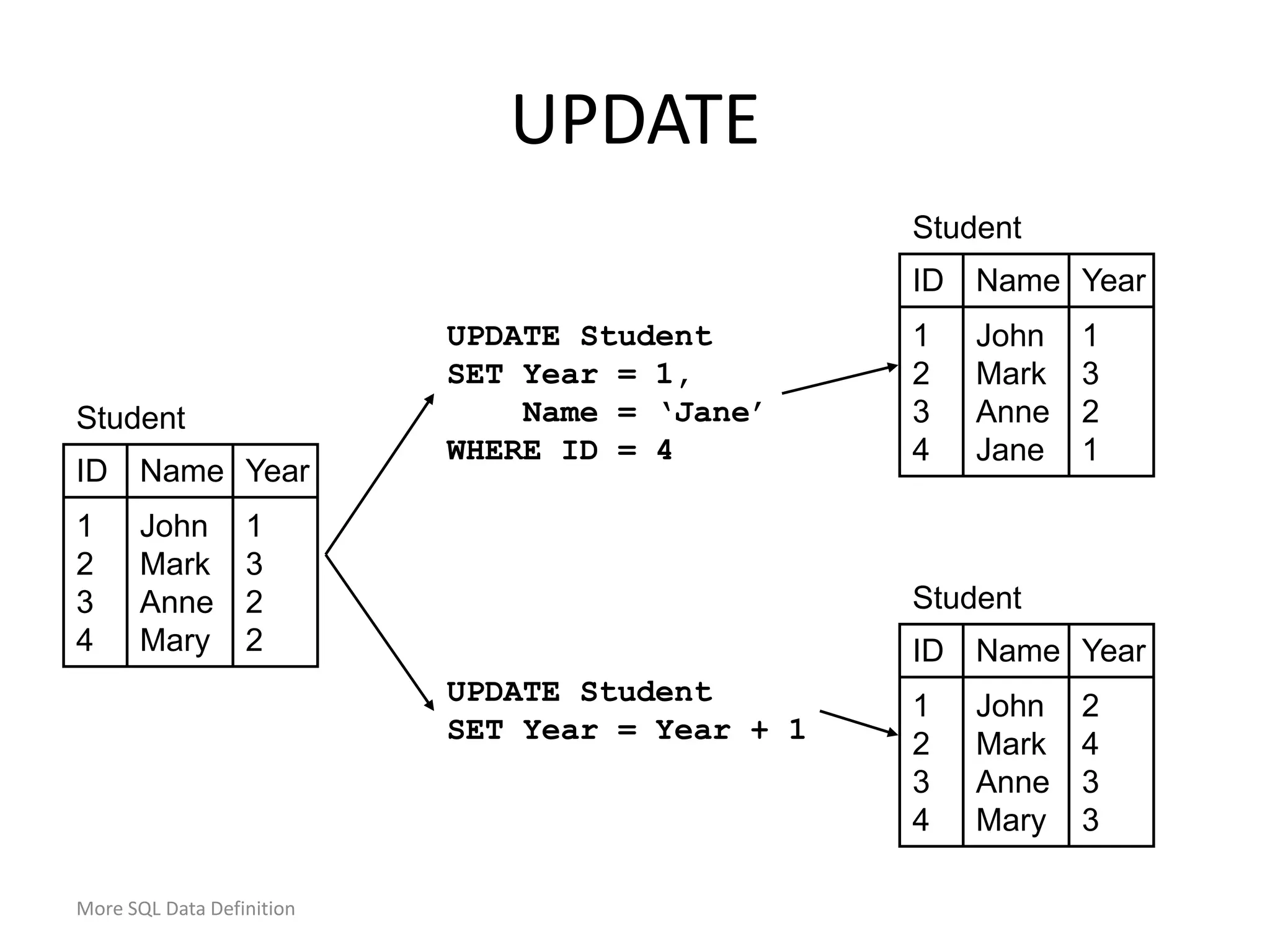
![More SQL Data Definition DELETE • Removes all rows which satisfy the condition DELETE FROM <table> [WHERE <condition>] – If no condition is given then ALL rows are deleted - BE CAREFUL – Some versions of SQL also have TRUNCATE TABLE <T> which is like DELETE FROM <T>](https://image.slidesharecdn.com/lecture4-dml-170401064241/75/DML-using-oracle-6-2048.jpg)
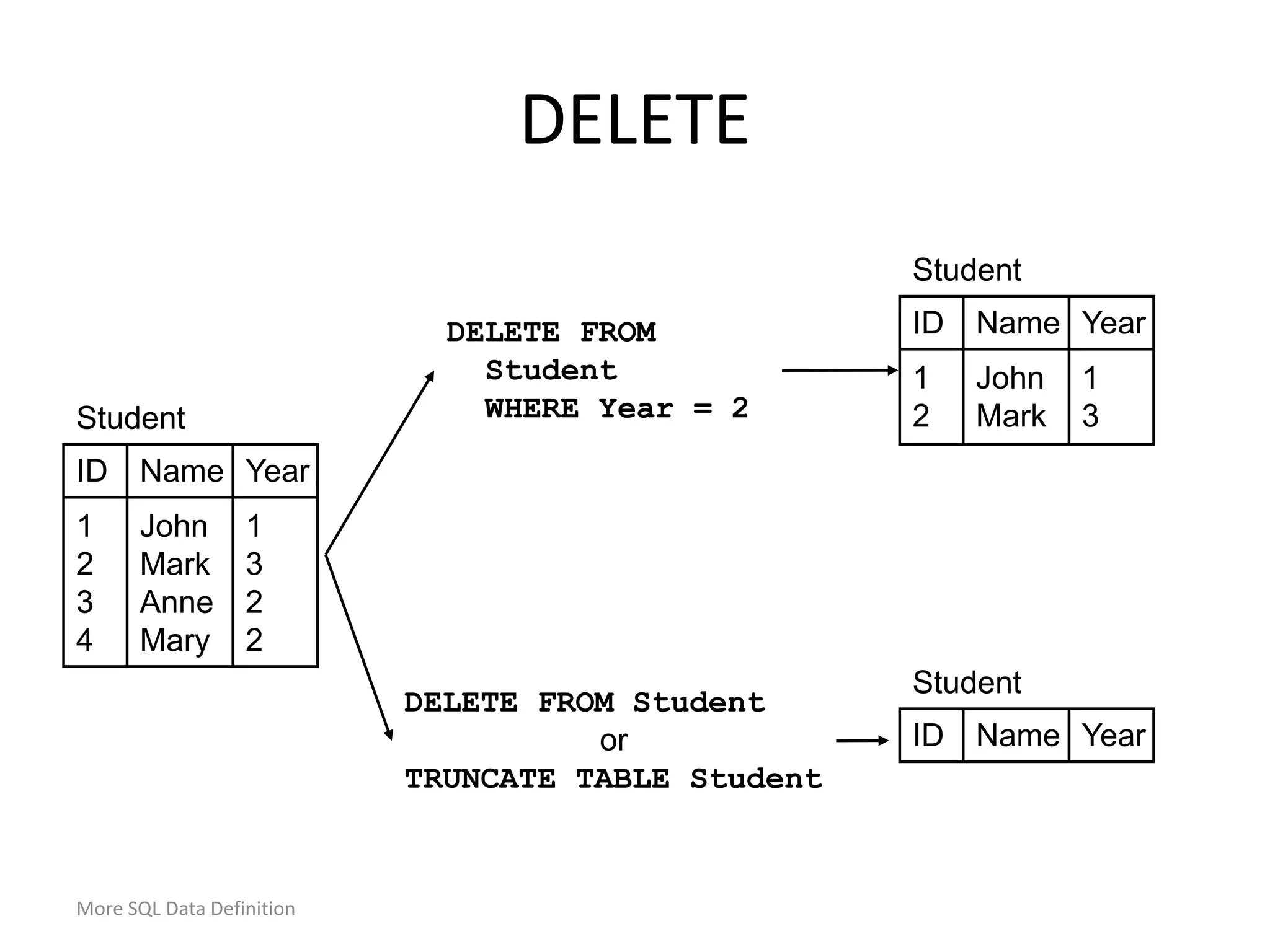
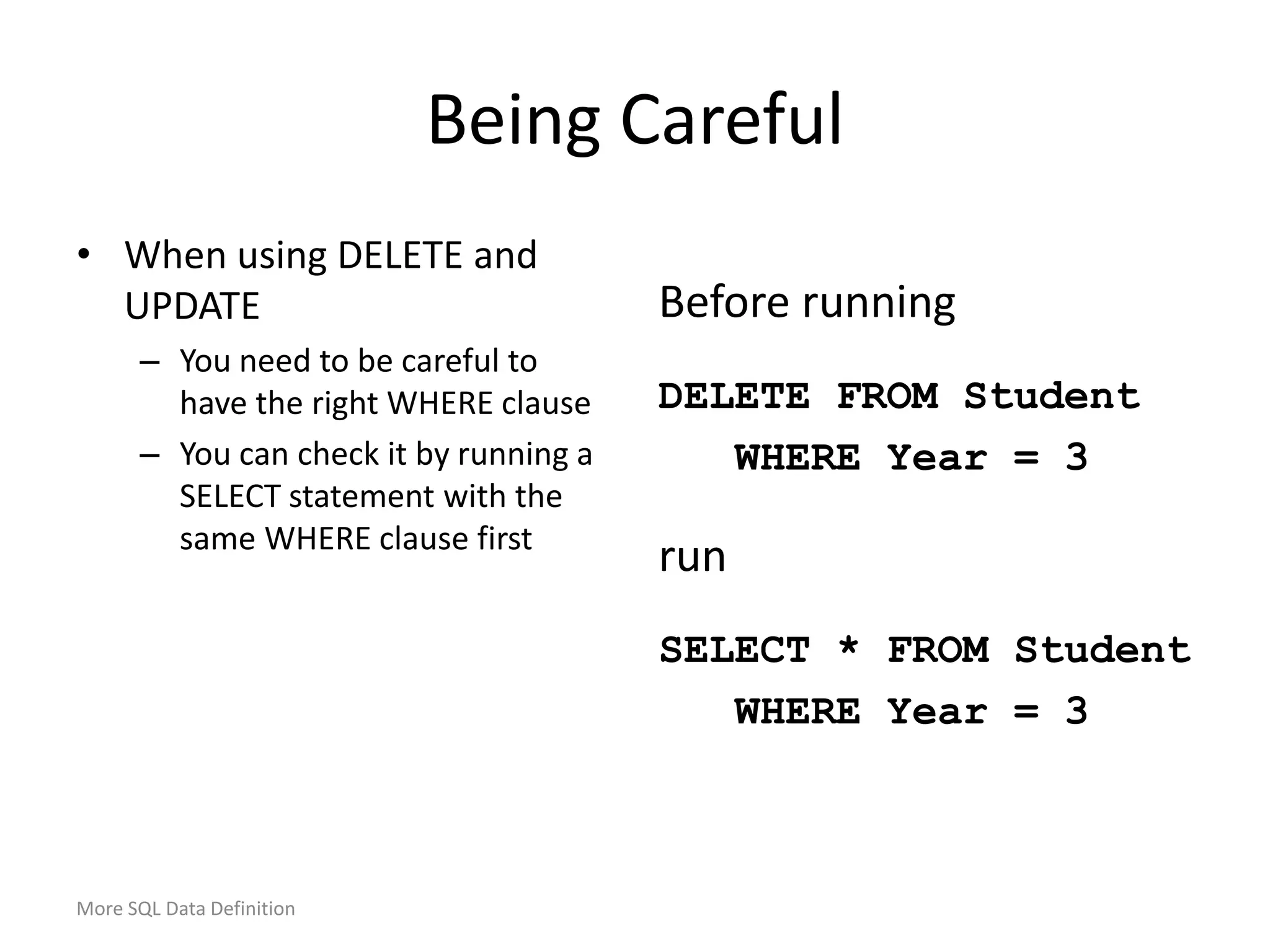
![More SQL Data Definition SQL SELECT Overview SELECT <column-list> FROM <table-names> [WHERE <condition>] [GROUP BY <column-list>] [HAVING <condition>] [ORDER BY <column-list>] • ([]- optional, | - or)](https://image.slidesharecdn.com/lecture4-dml-170401064241/75/DML-using-oracle-9-2048.jpg)
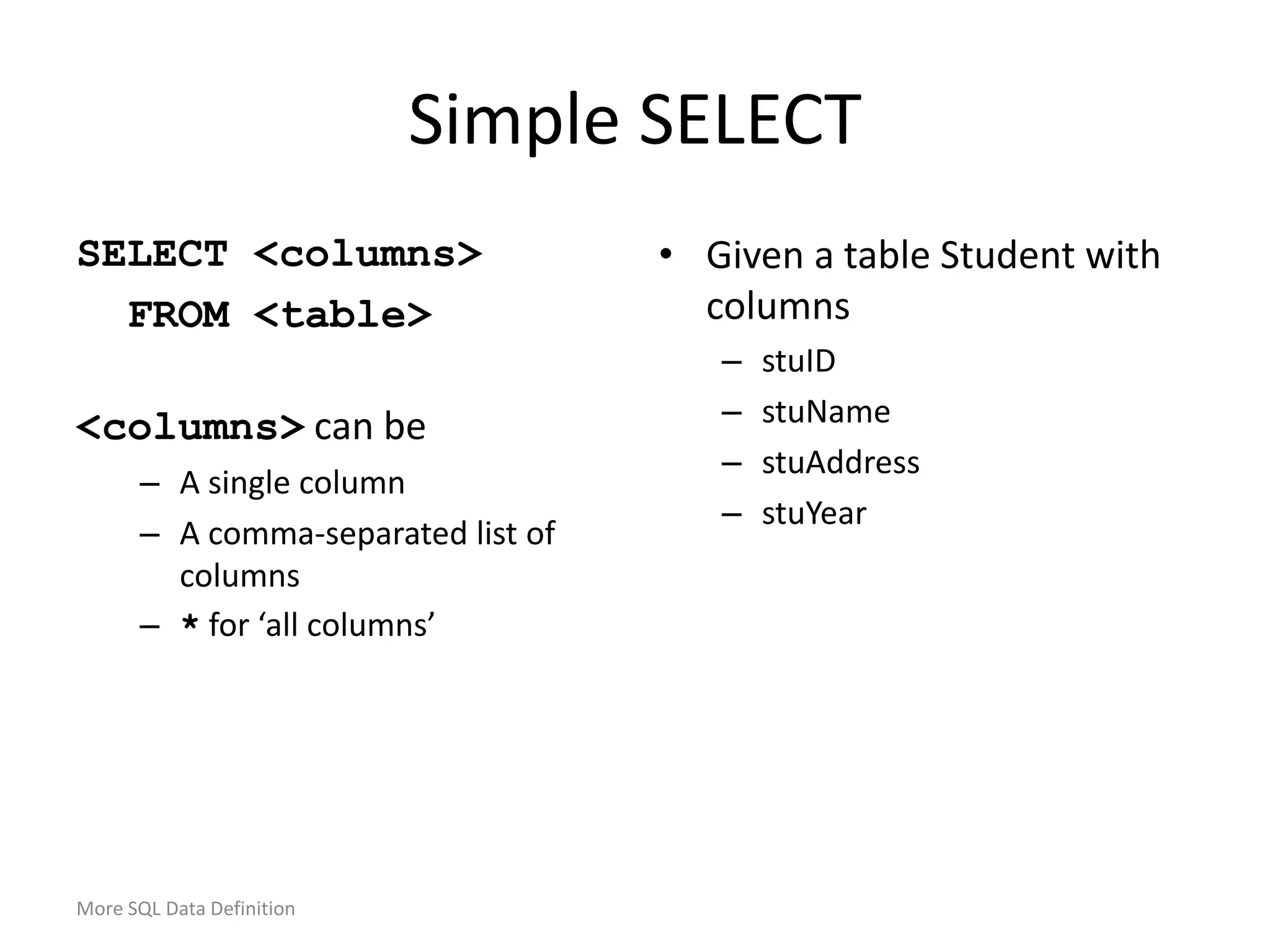
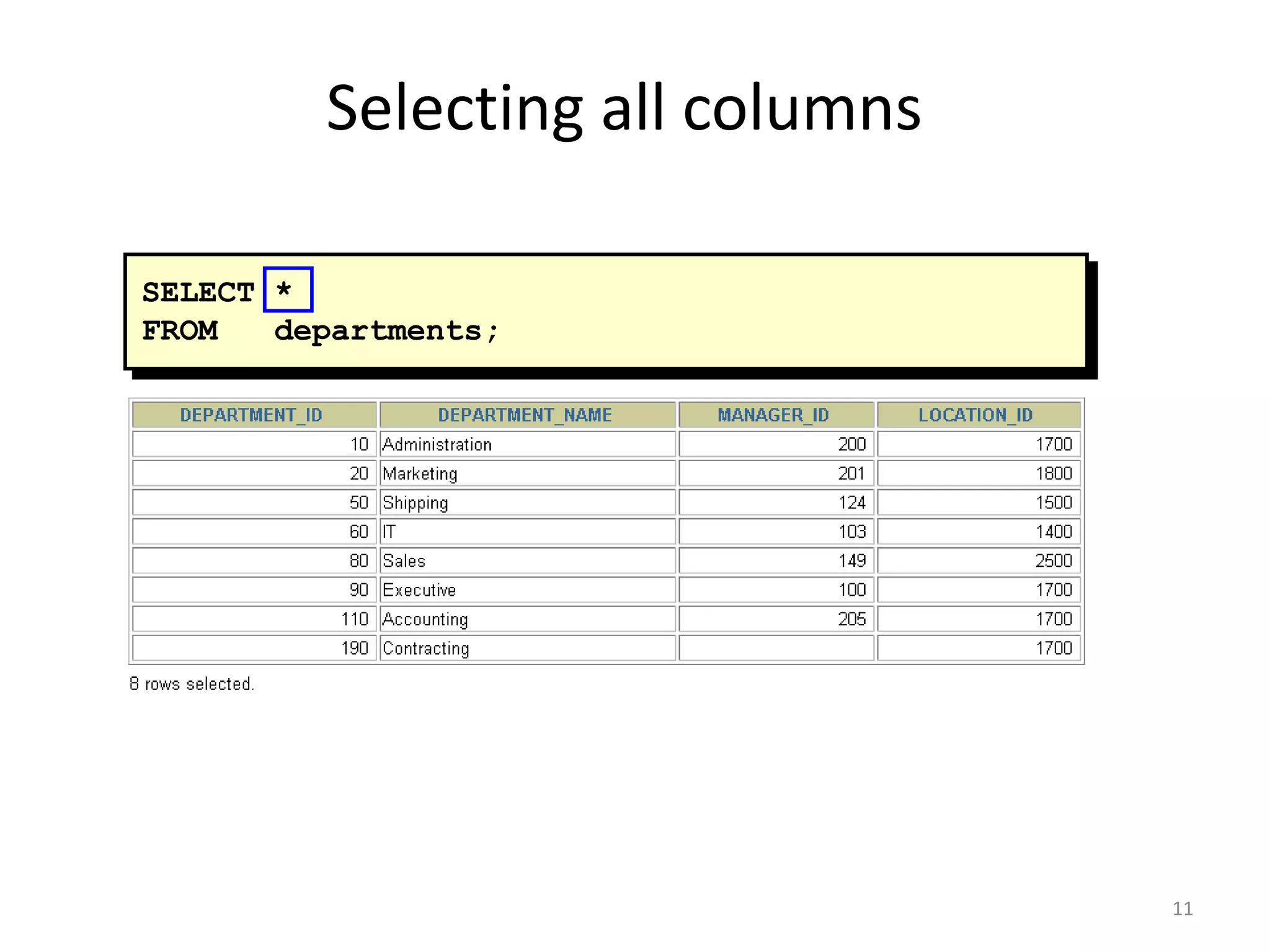
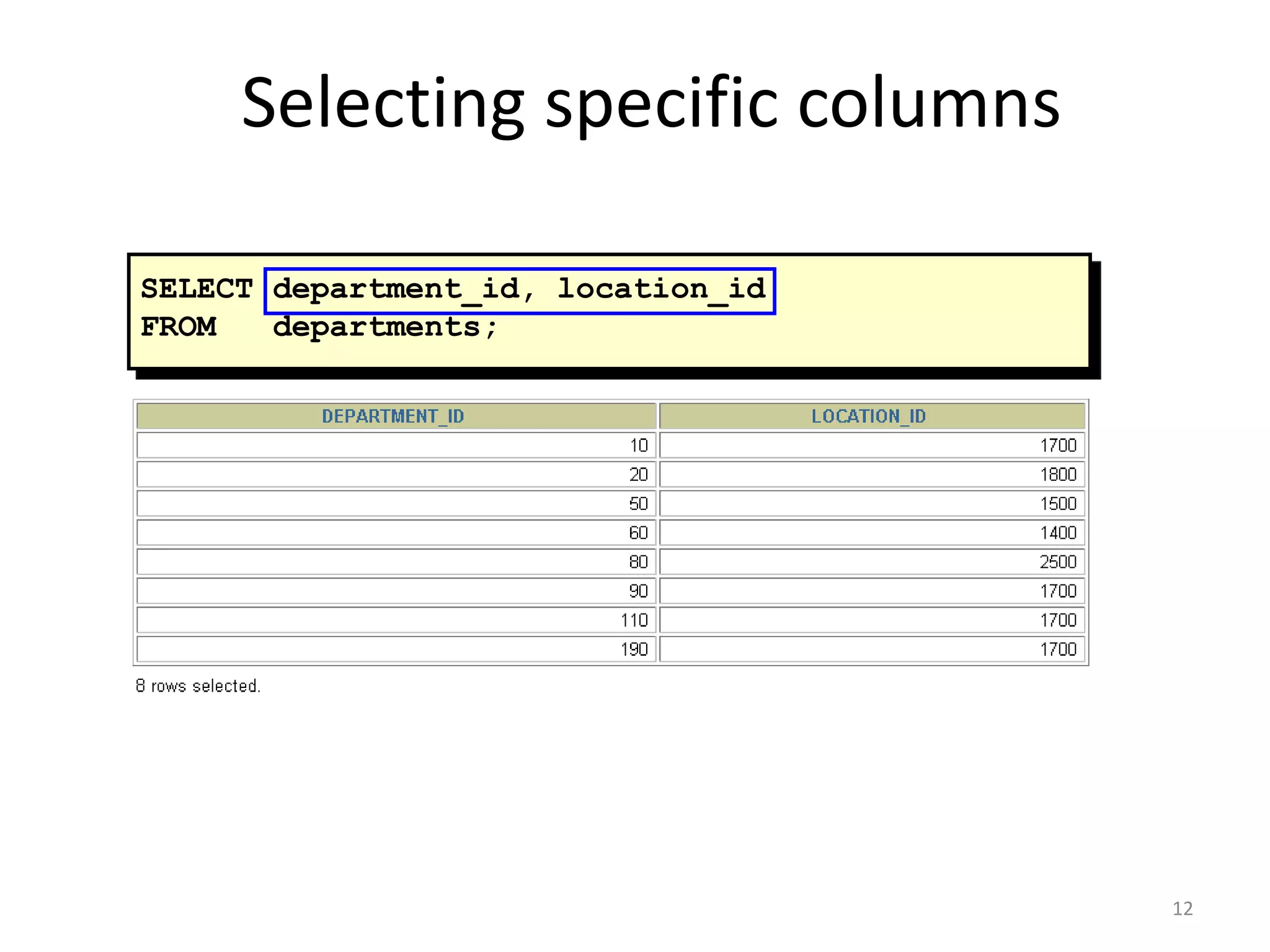
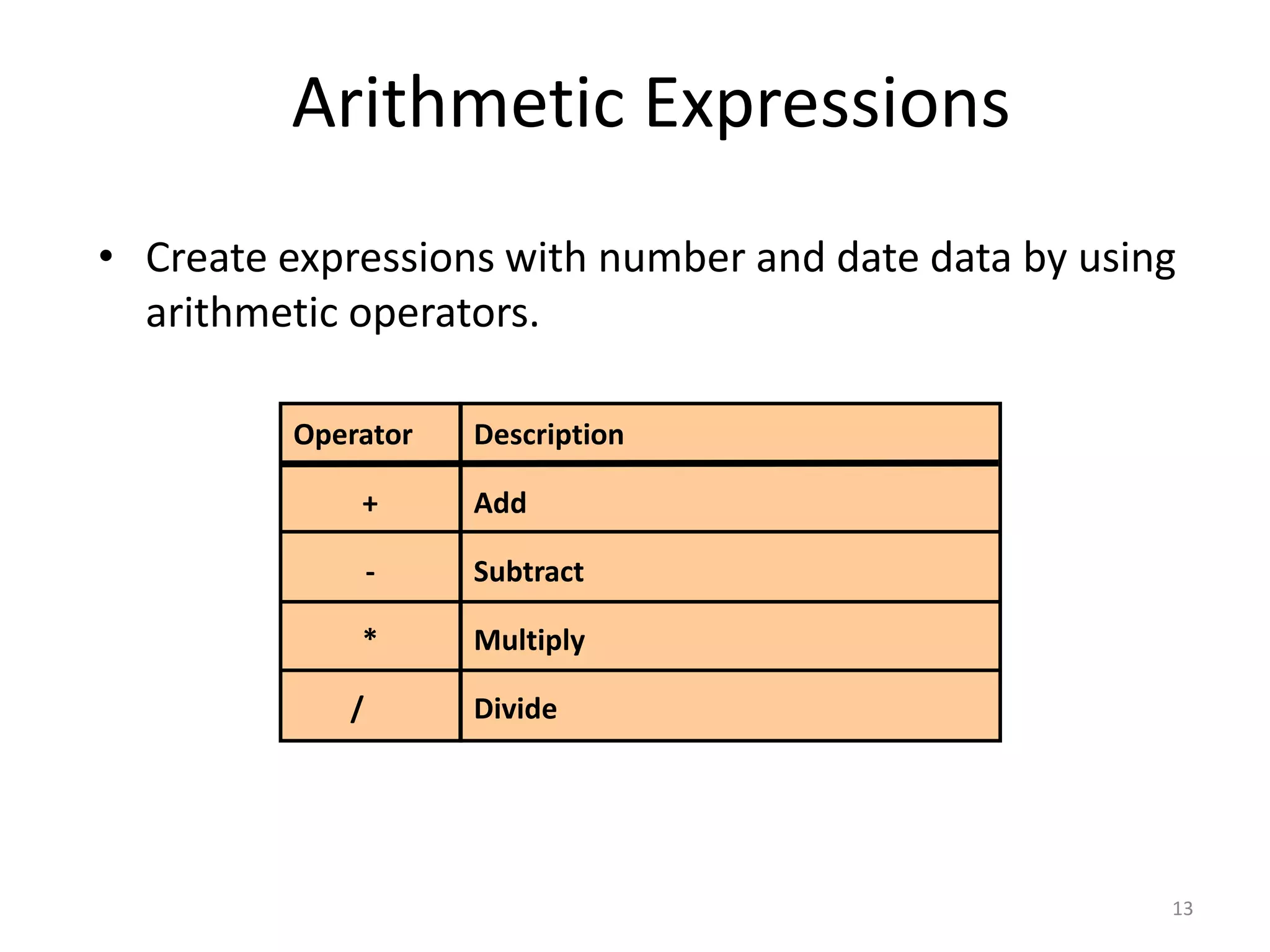
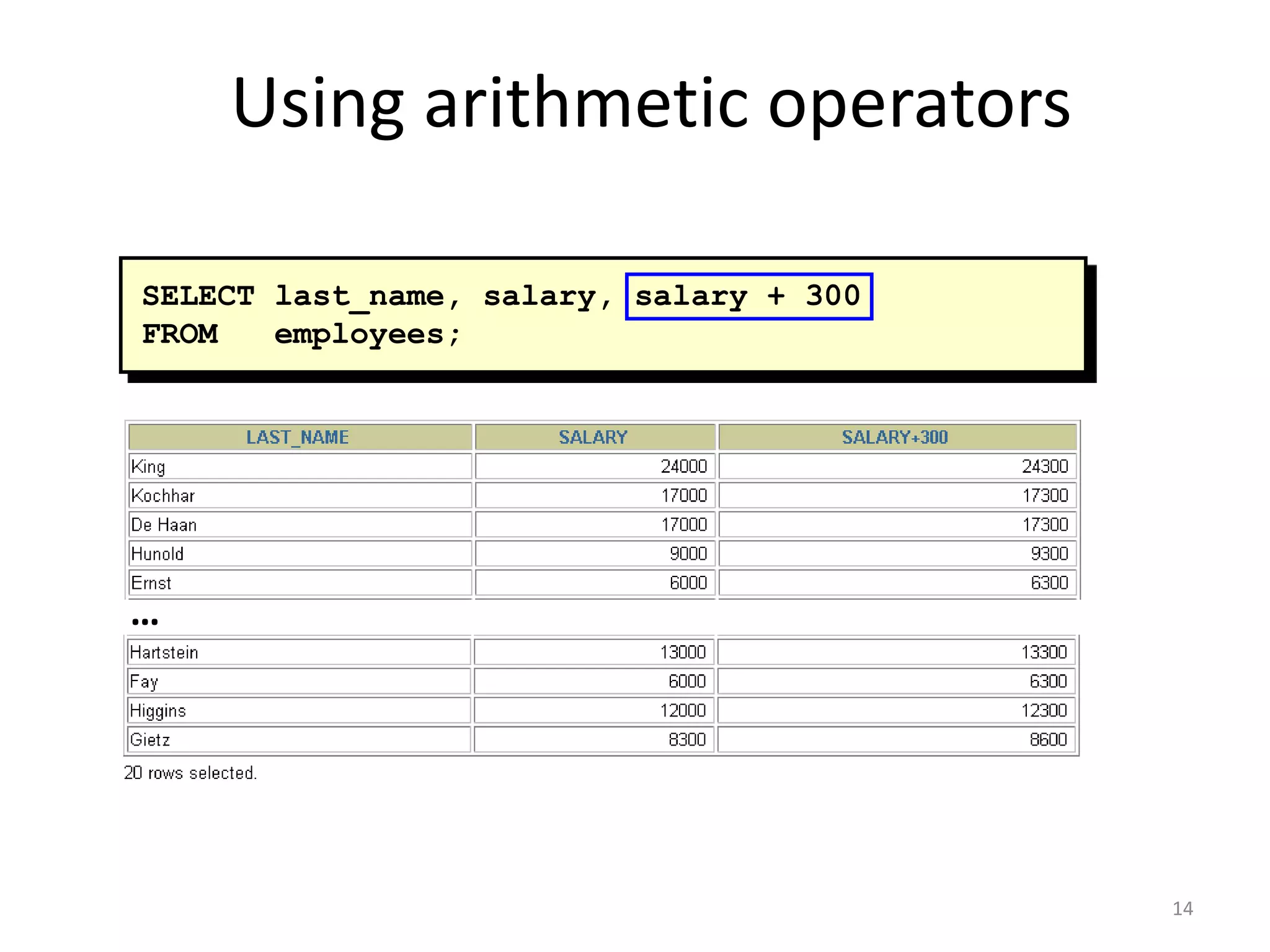
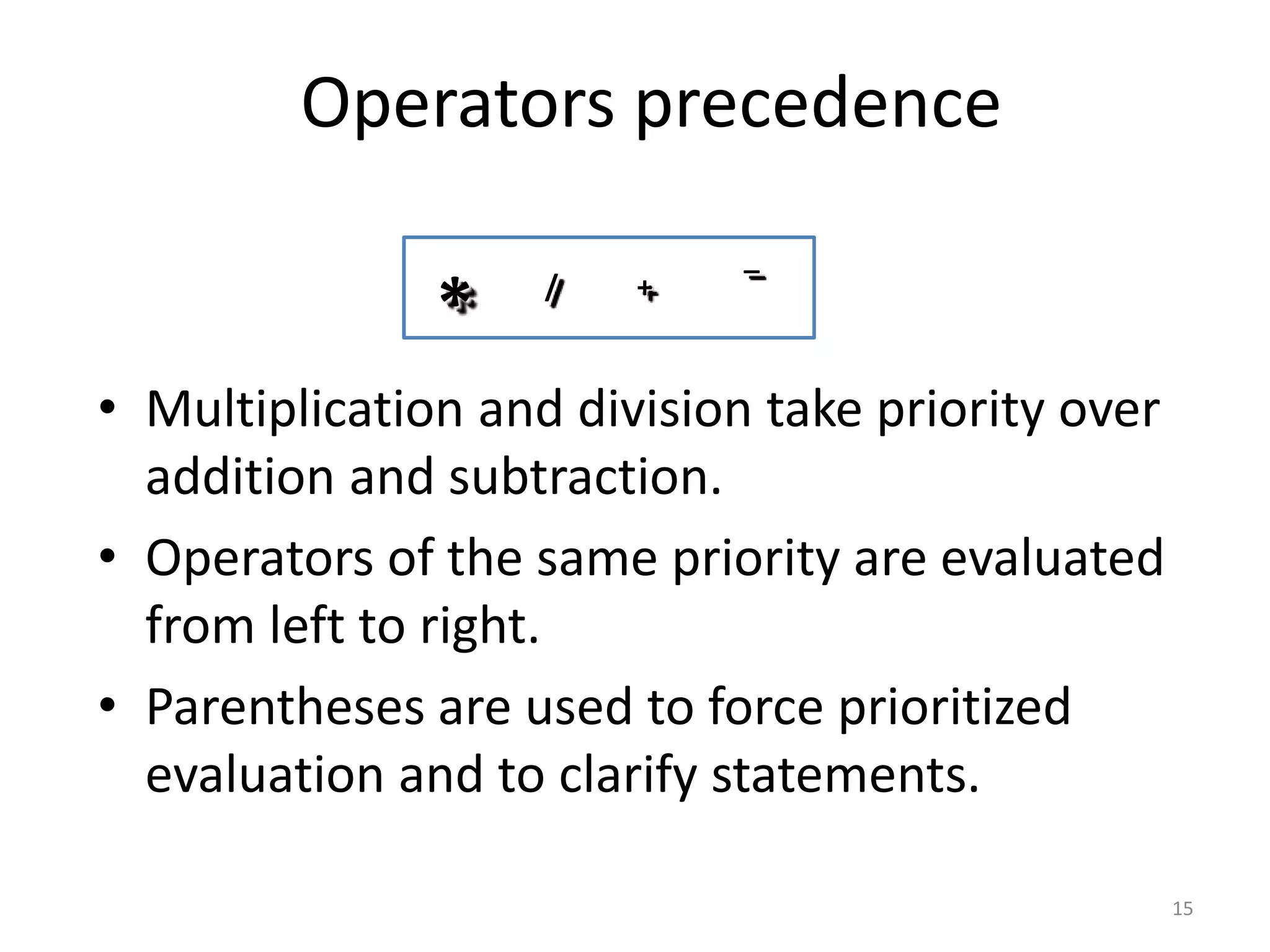
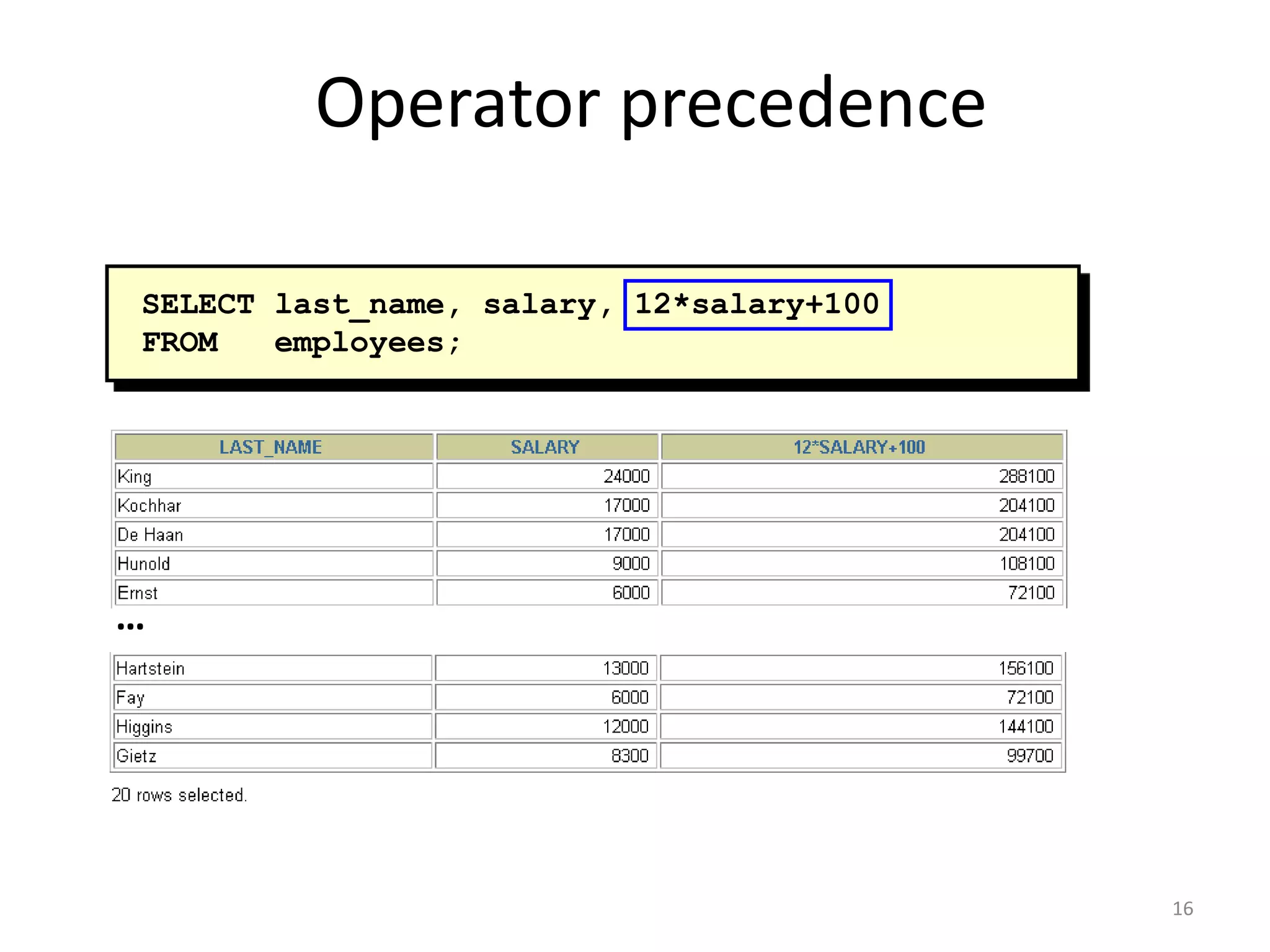
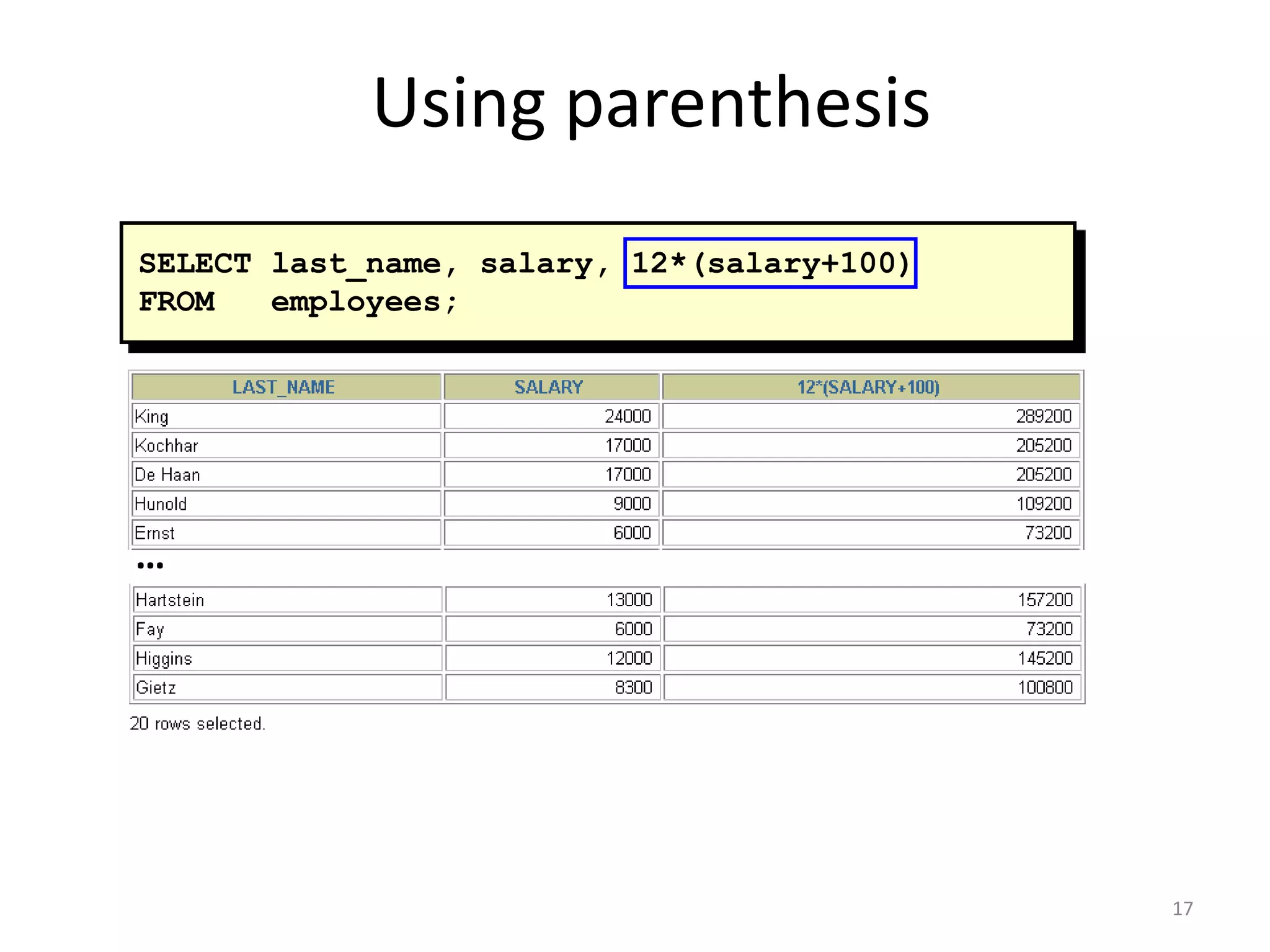
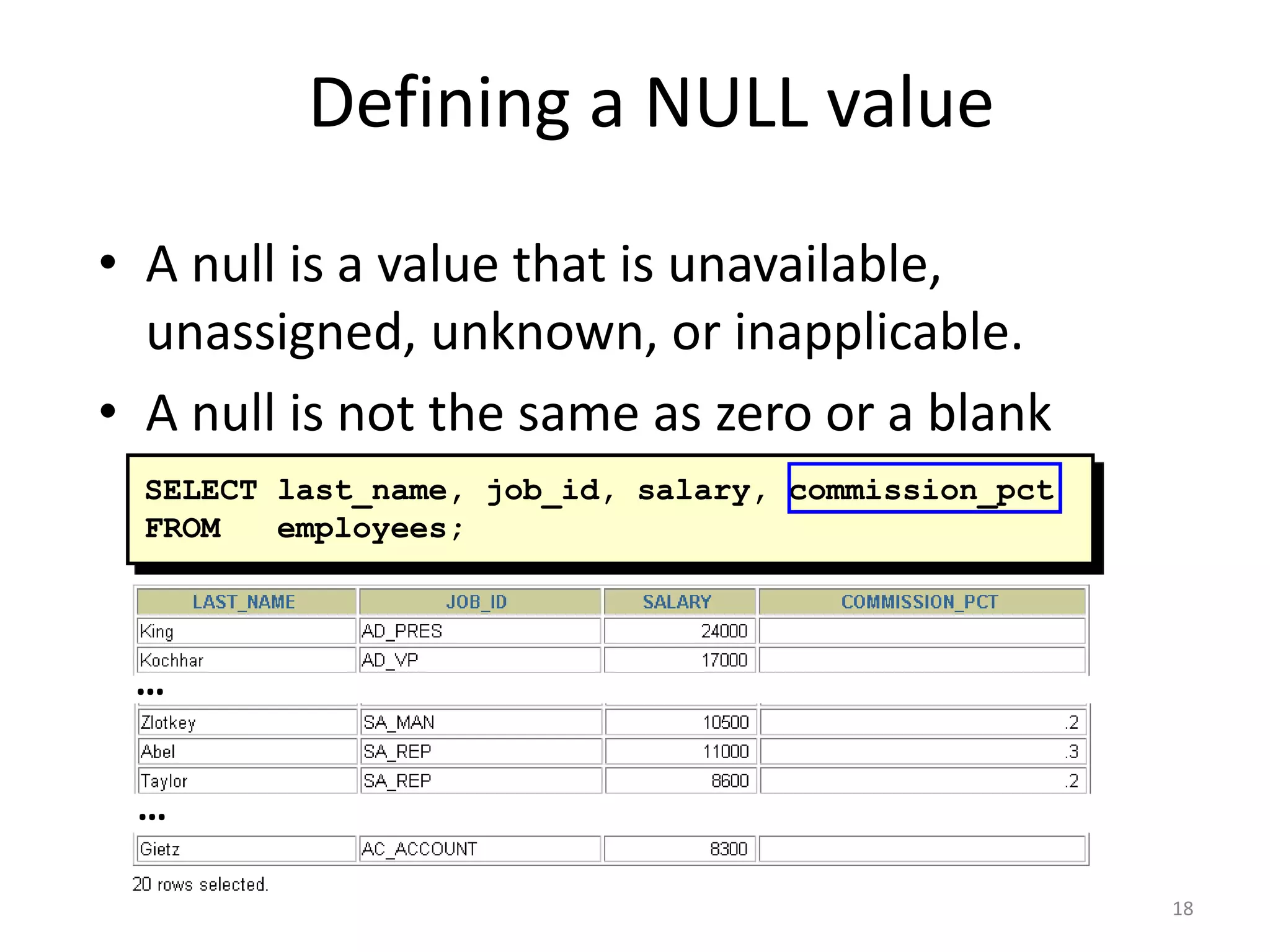
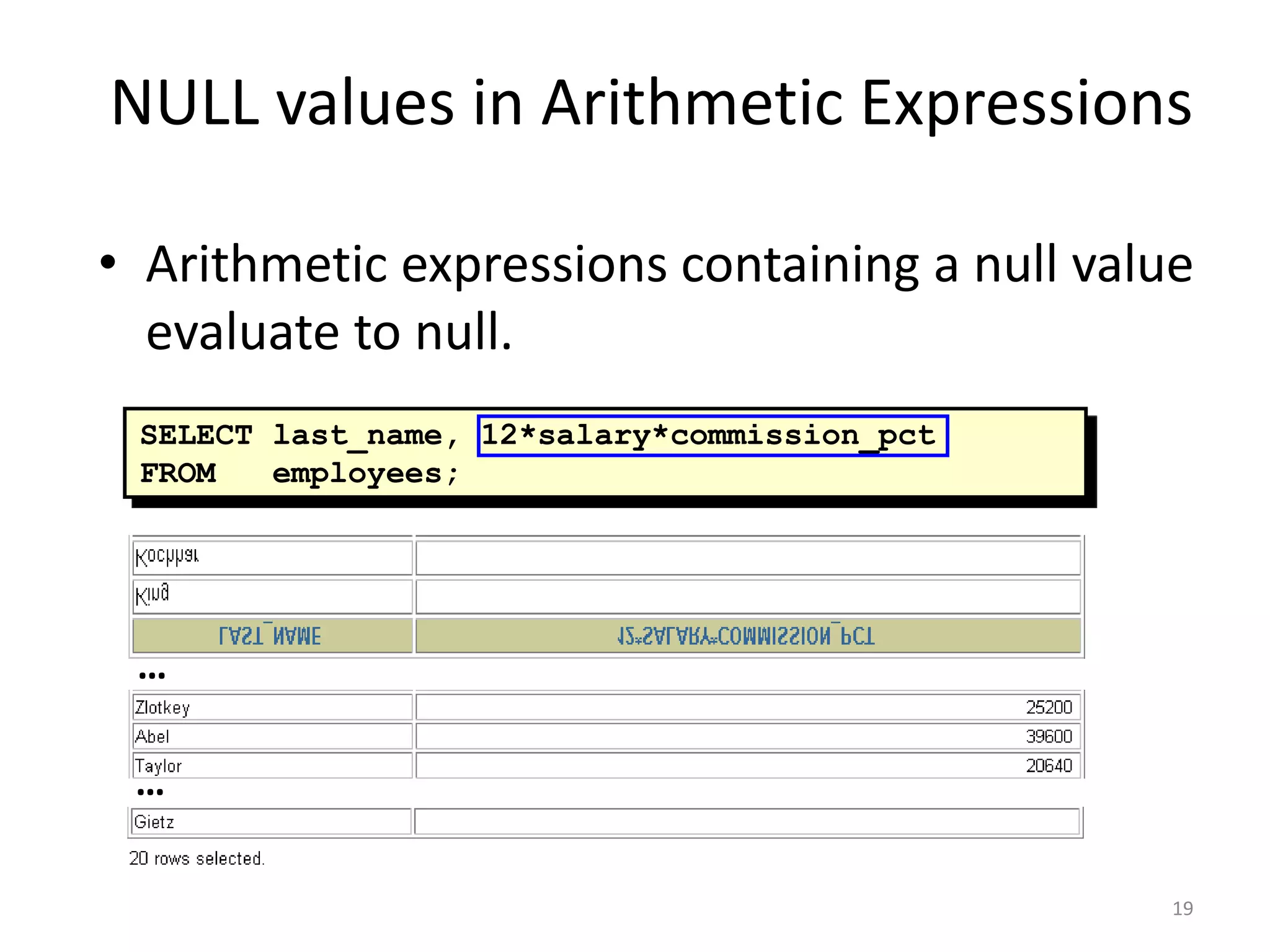
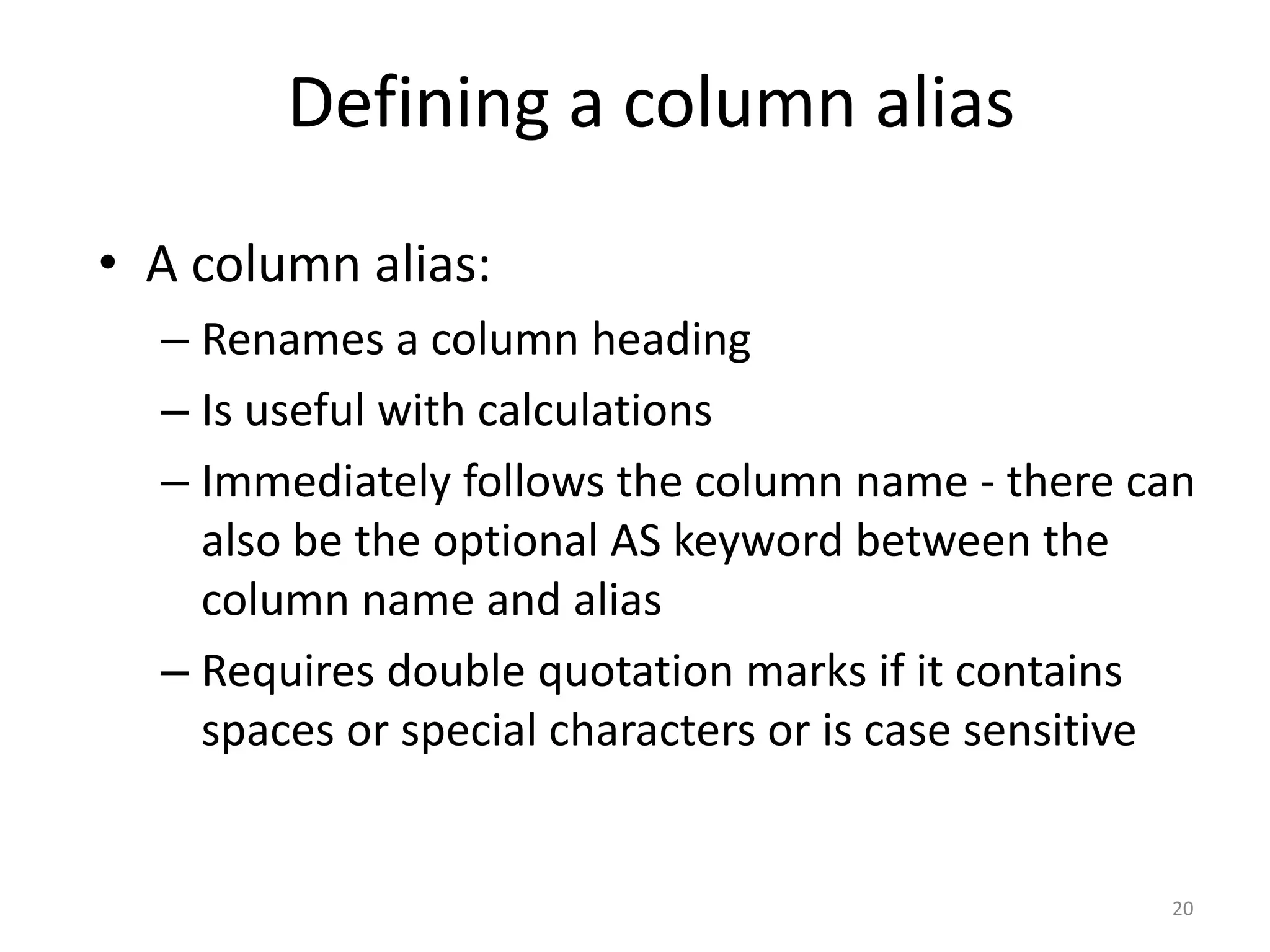
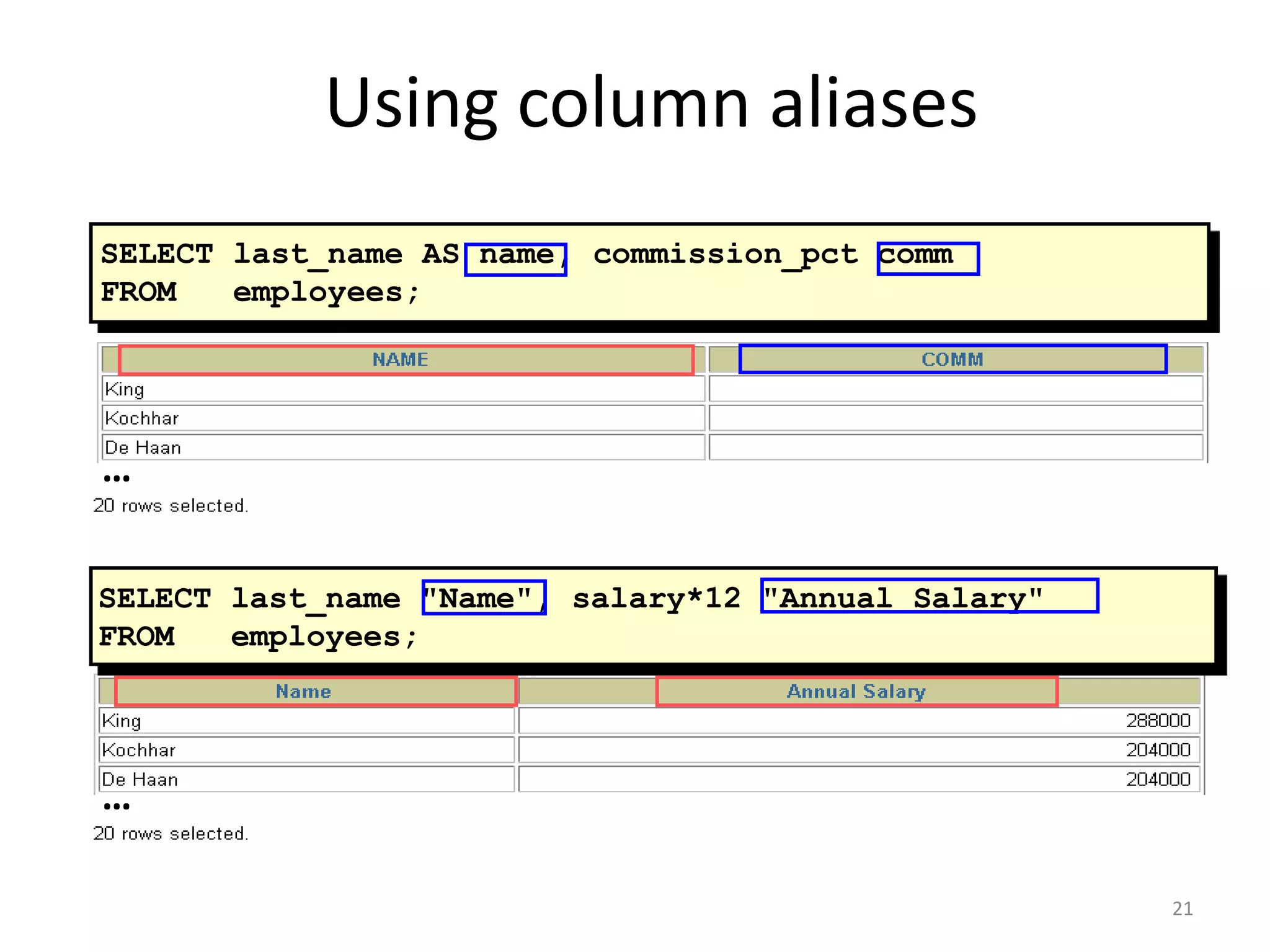
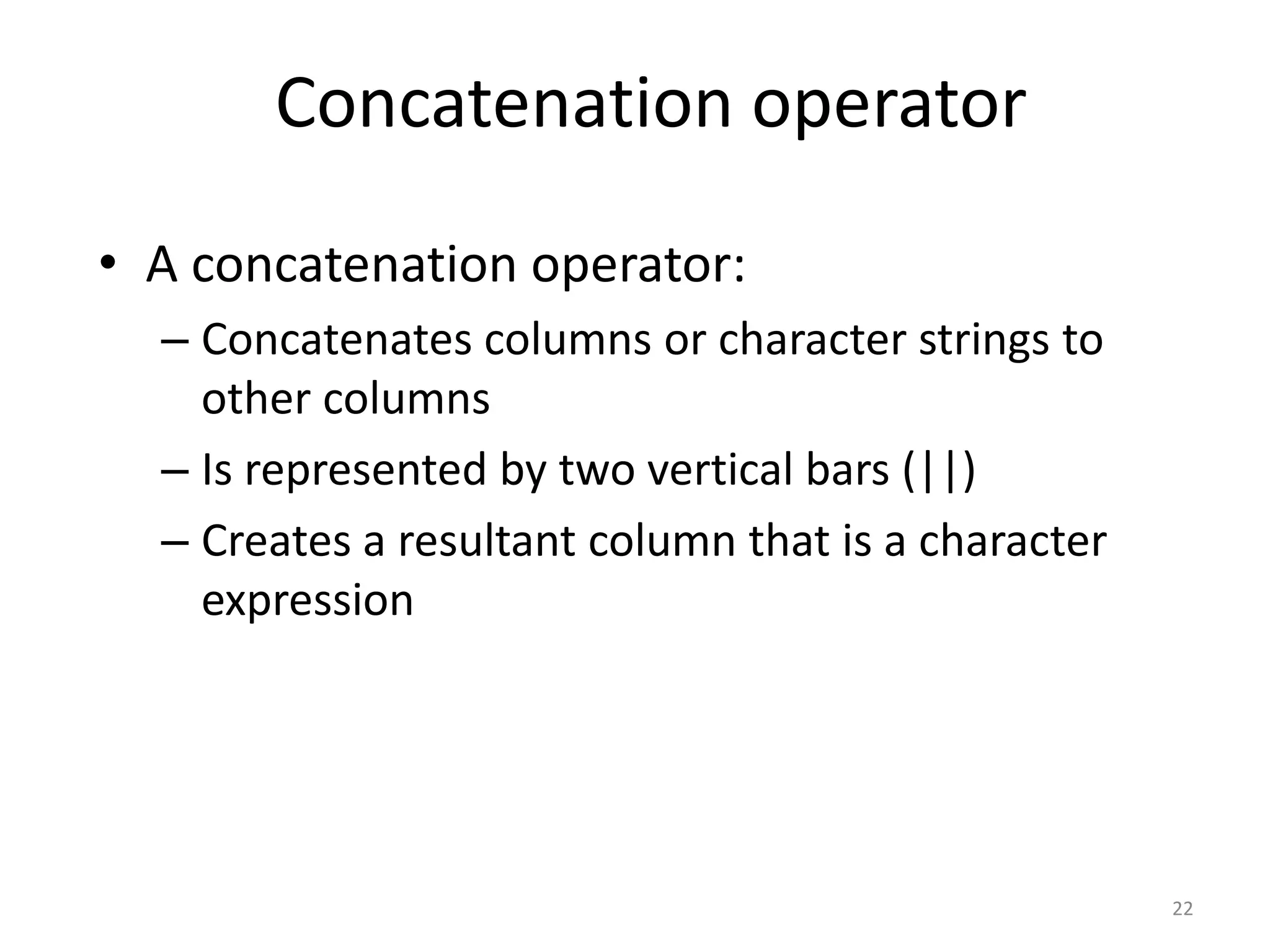
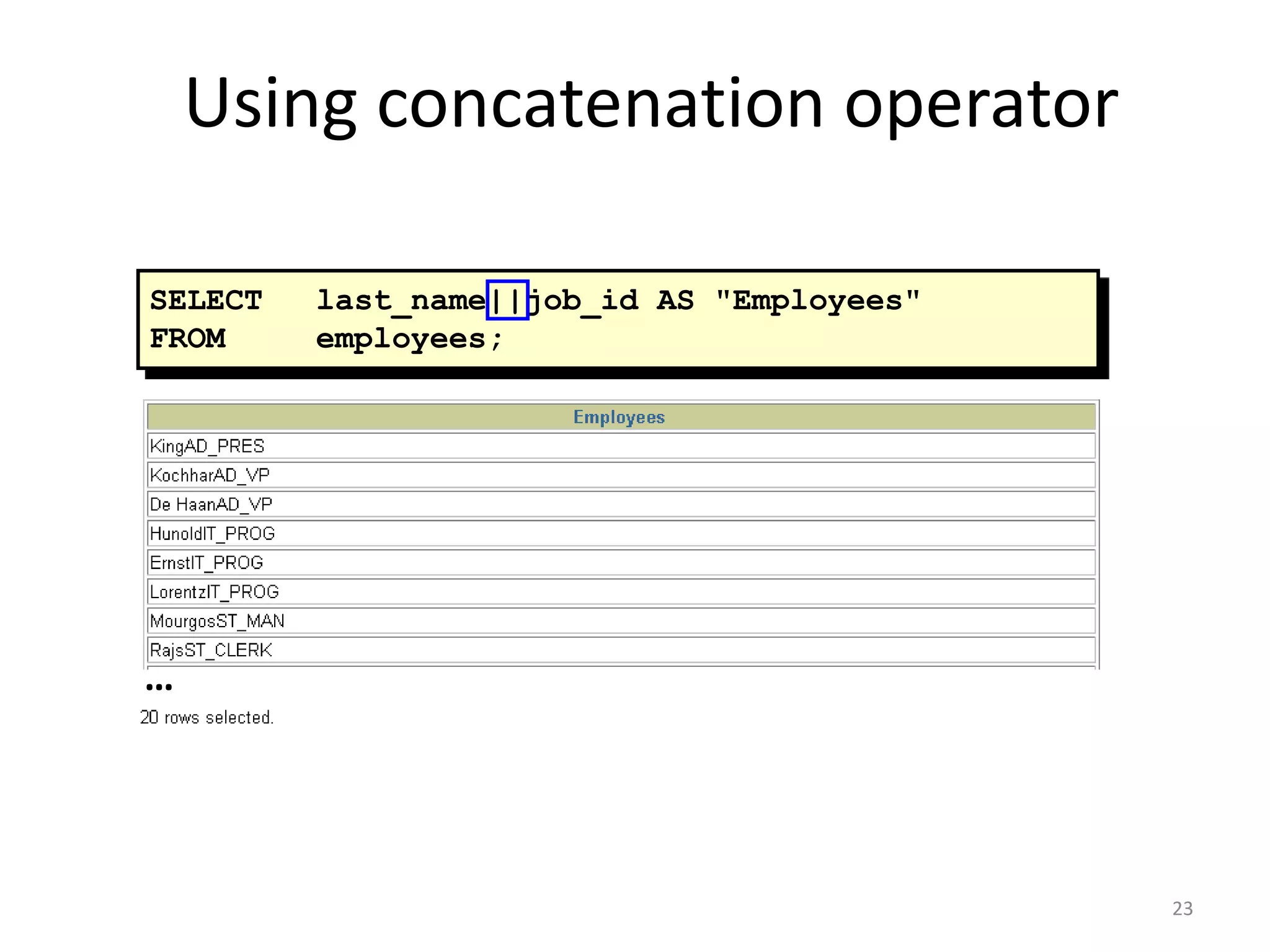
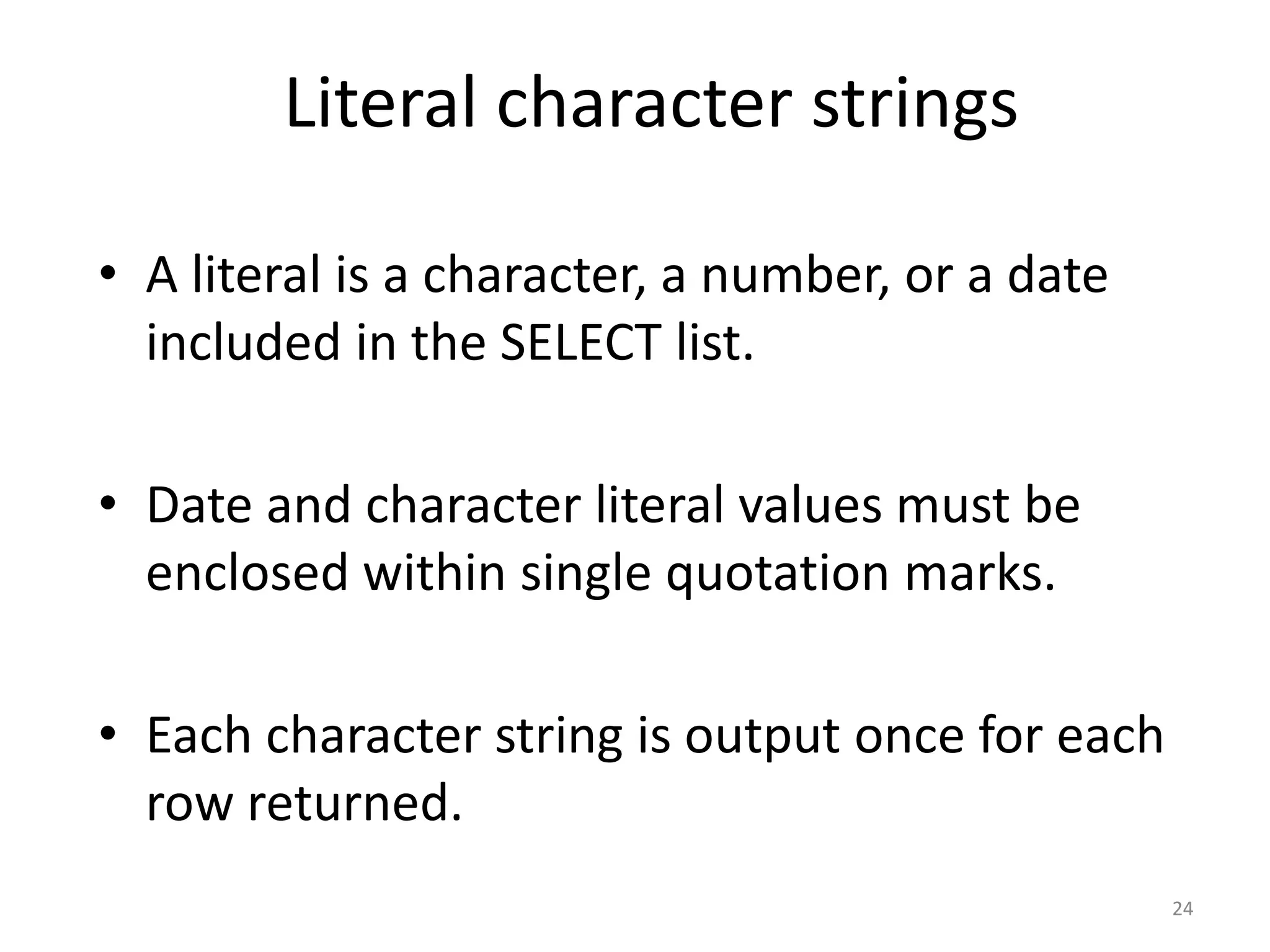
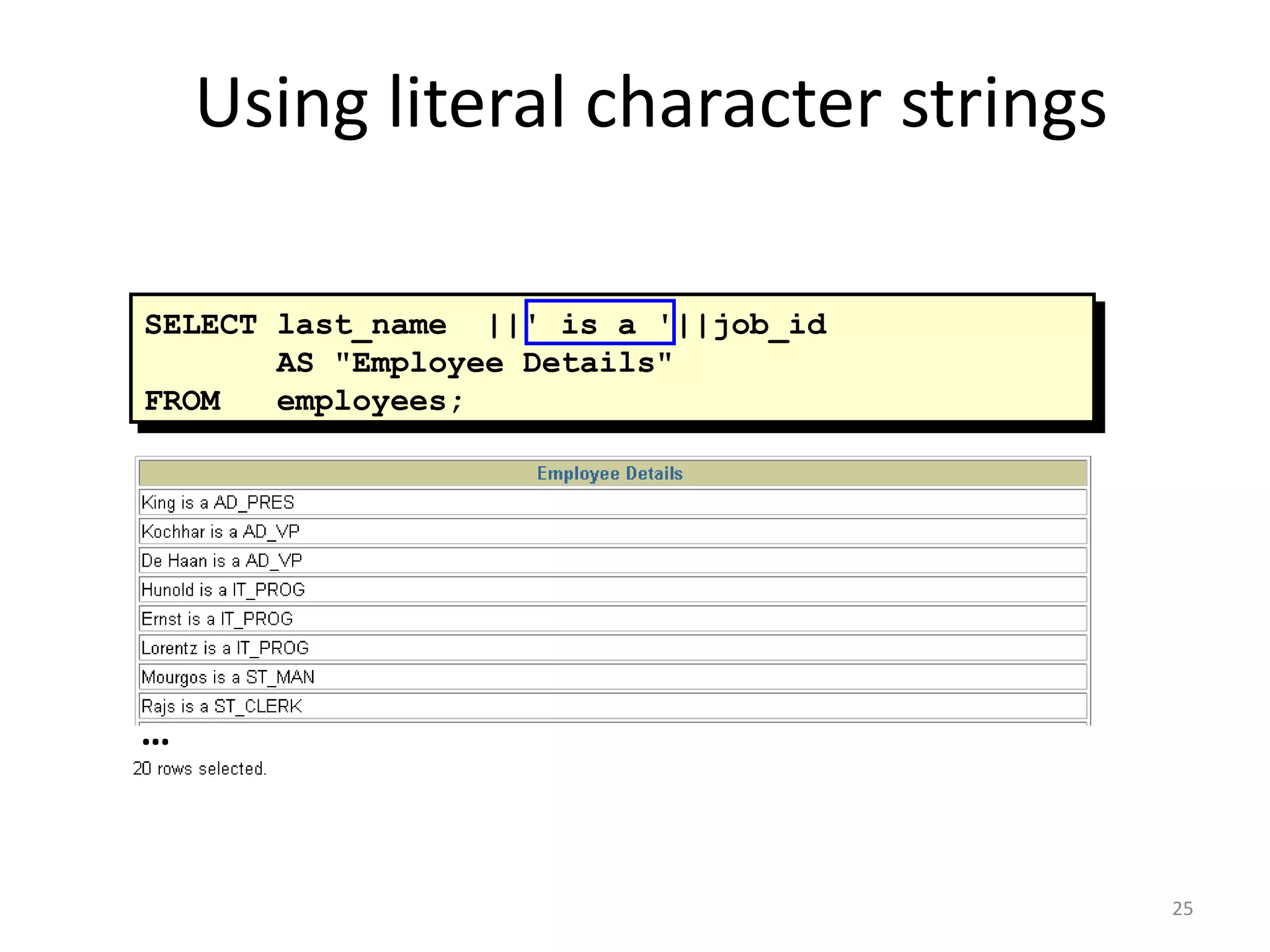
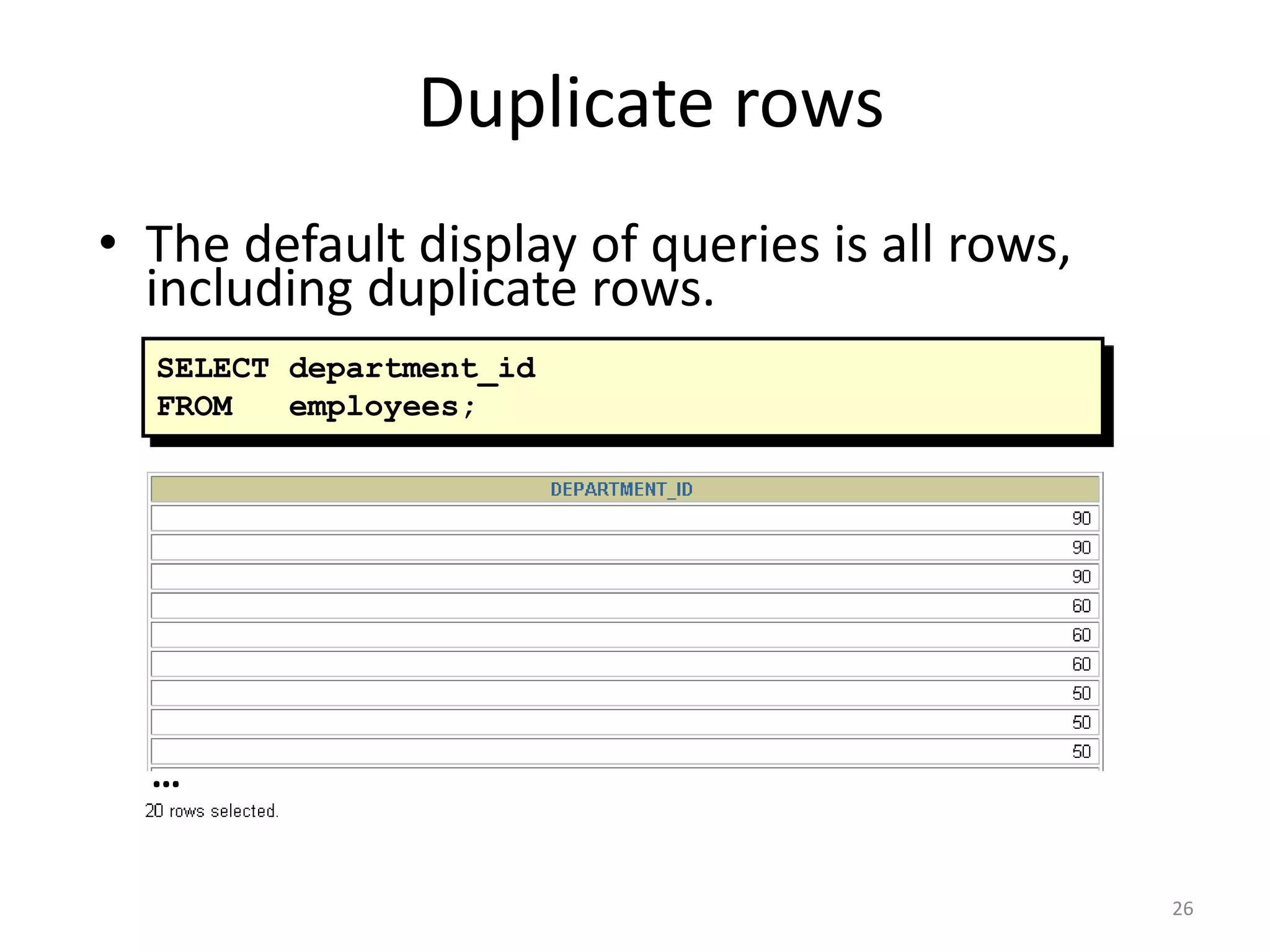
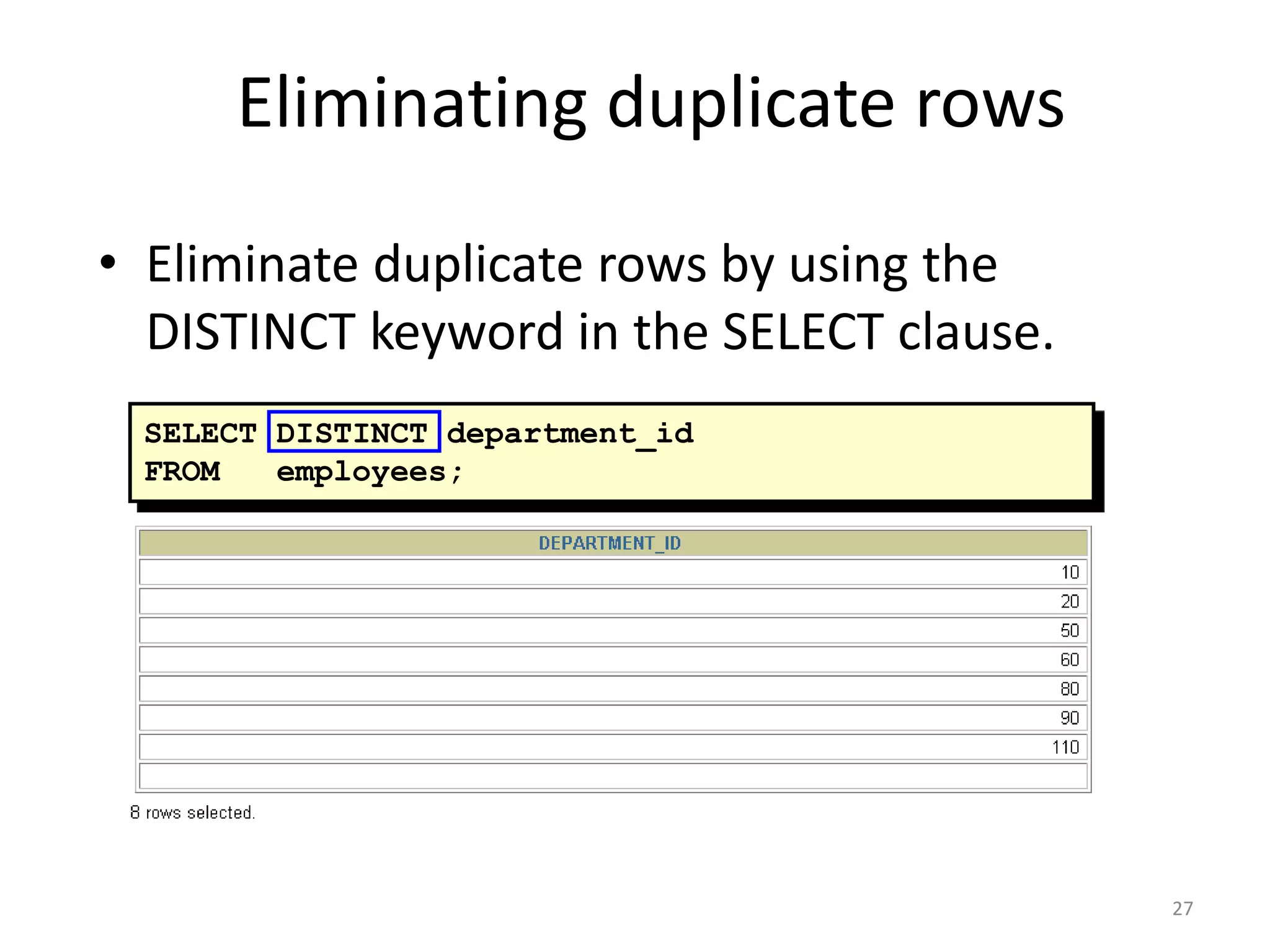
![The CASE Expression Facilitates conditional inquiries by doing the work of an IF-THEN-ELSE statement: CASE expr WHEN comparison_expr1 THEN return_expr1 [WHEN comparison_expr2 THEN return_expr2 WHEN comparison_exprn THEN return_exprn ELSE else_expr] END](https://image.slidesharecdn.com/lecture4-dml-170401064241/75/DML-using-oracle-28-2048.jpg)
